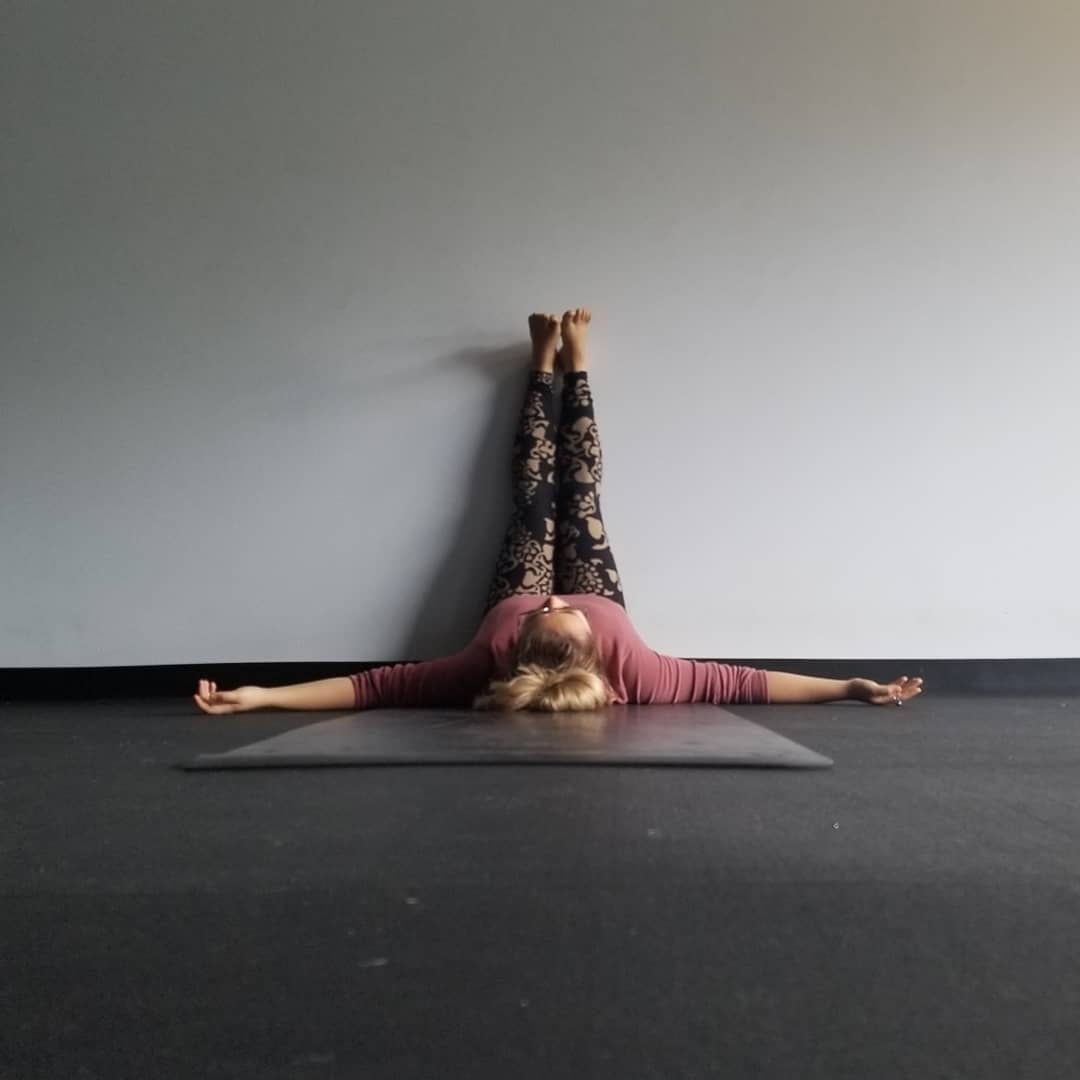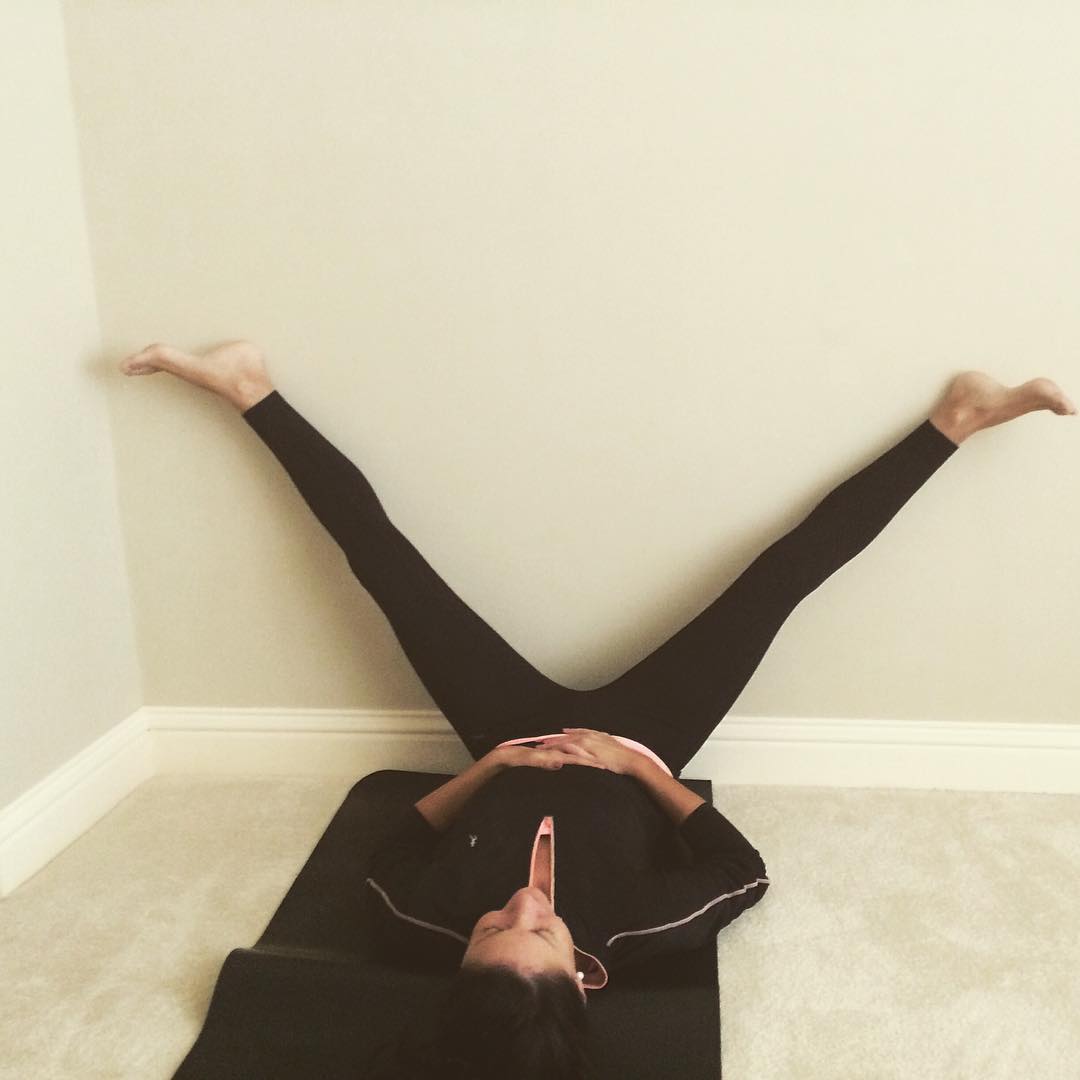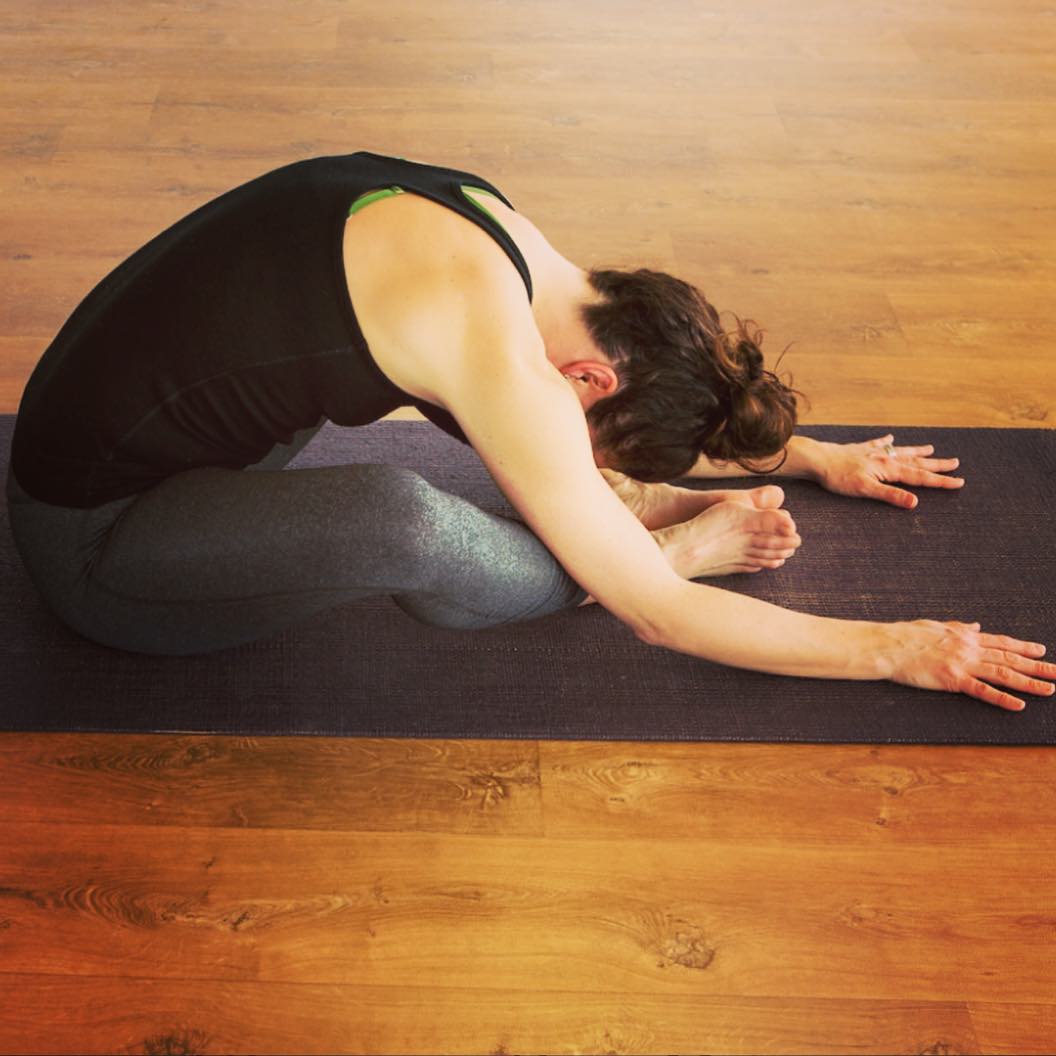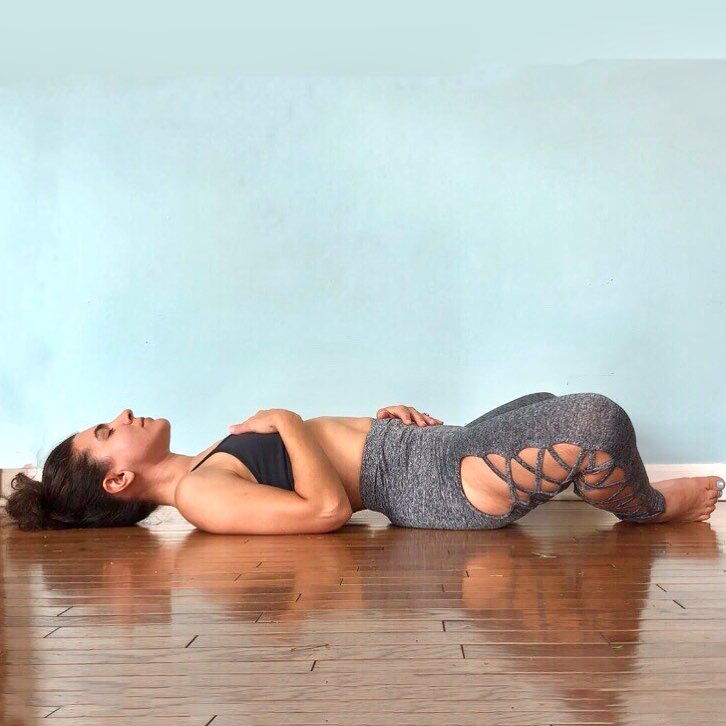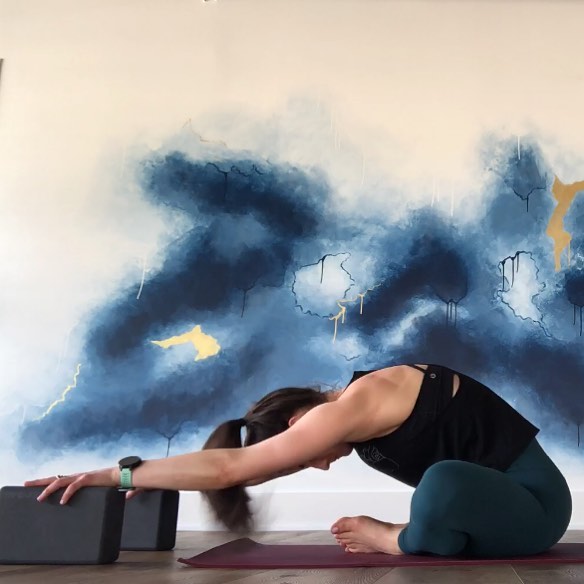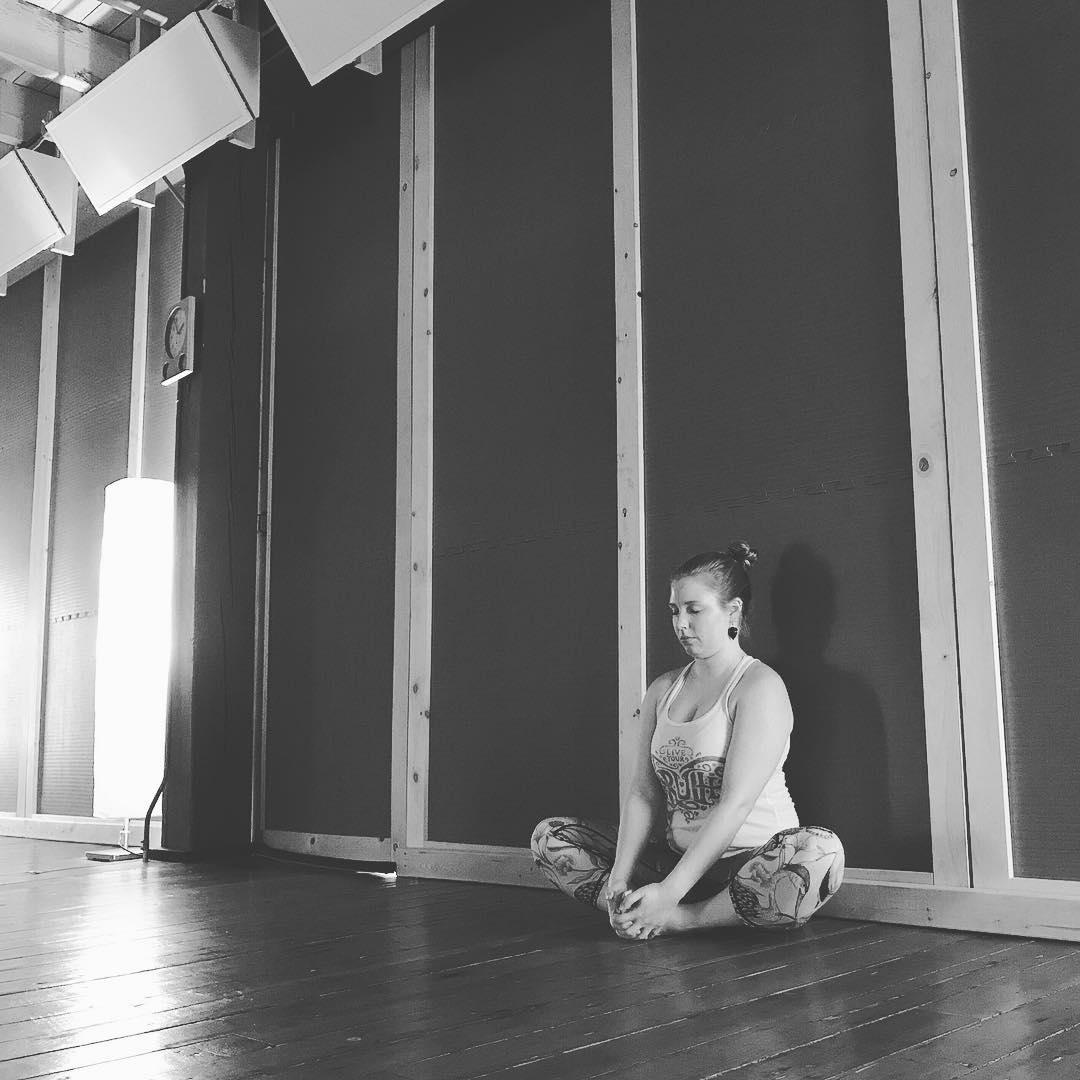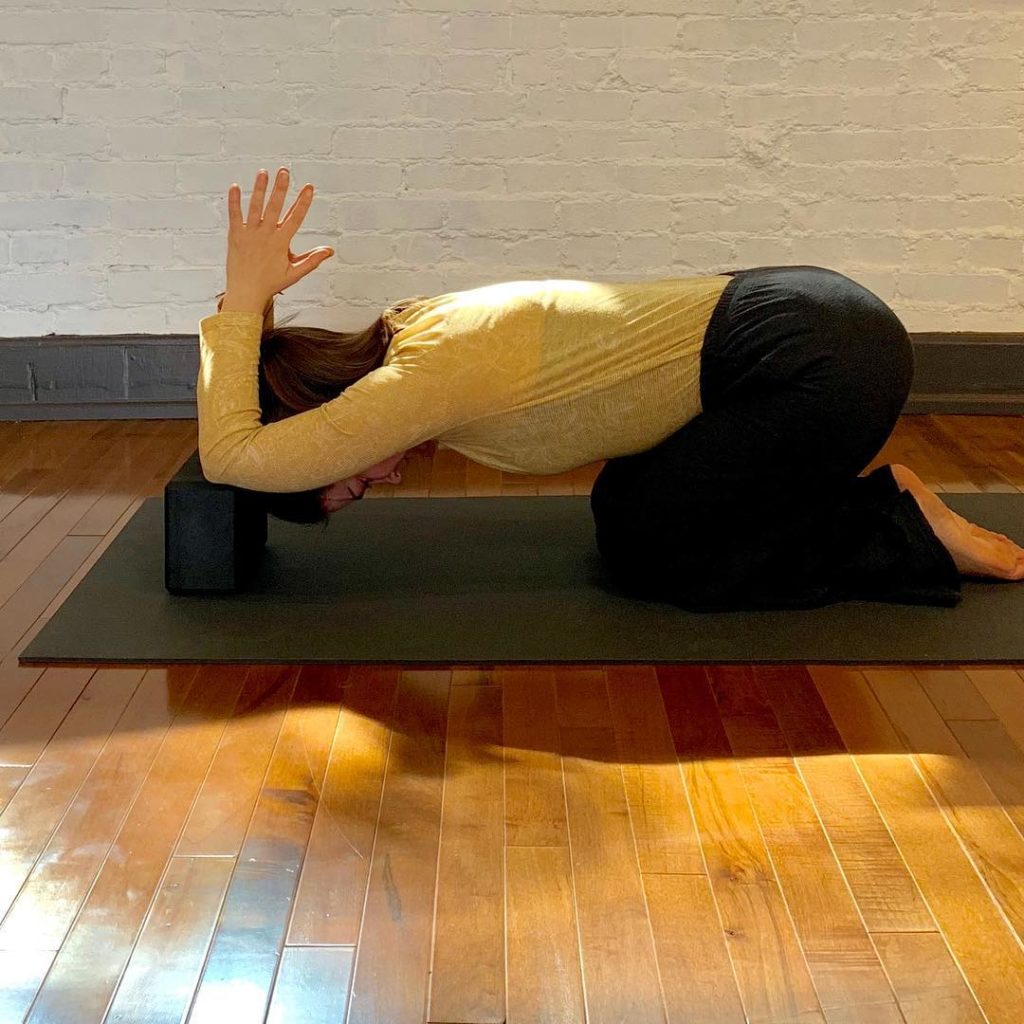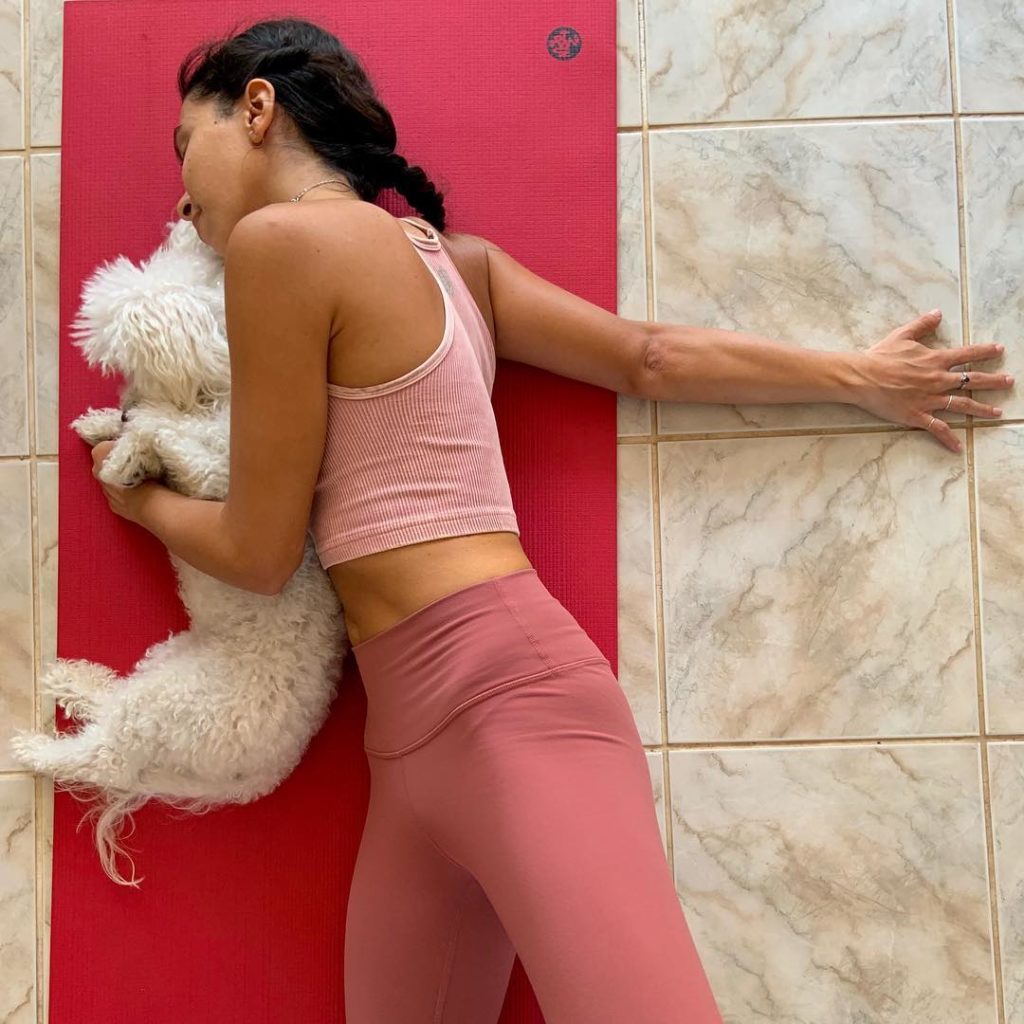You have control over your physical yoga practice and if you practice in a studio, you can start right when you enter class. Those few minutes before class starts, before your teacher arrives, is an opportunity to listen to your mind and body. Use this moment to disconnect from tech and give yourself what you need, whether it’s calming the mind, opening the hips…
Here are some tips to help you get started.Calm Mind
Pranayama or Breath Control
Either lying down or in a seated pose that is comfortable for you, consciously slow down the breath. You can start with a 3-count inhale, pause and hold the breath for 3 counts, and exhale for 3. Work towards filling up the lungs with air and completely emptying it out. You can extend the count as you settle in.
Legs Up the Wall
If you’re practicing next to a wall, simply scoot all the way until your buttocks touch the wall. Place the soles of the feet on the wall and then straighten the legs. Stay here for a few breaths.
You have the option of keeping the legs together or choose to spread them apart to feel the stretch in the inner thighs.
Make circles with your ankles and flex and point the feet.
Child’s Pose
You can choose an active or a passive child’s pose.
Hip Openers
Gentle Baddha Konasana or Bound Angle Pose
You can rest in bound angle pose either lying down on the floor (supine) or seated version.
Bend the knees, point them in opposite directions, and have them as close to the ground as possible. Move the feet closer to the groin. For support, you can place blocks under the knees.
For more external rotation of the hips, slightly bend the knees and create a diamond shape with the legs. Compared to the traditional bound angle pose, the feet are farther away from the groin, but knees are still pointing towards the opposite sides.
This pose is also known as cobbler pose.Shoulders
Shoulder Flossing
Take a strap or a towel. With your hands outstretched and parallel to each other, hold the strap using both hands. The arms should be wider than shoulder width apart. Remember that the narrower the hands, the more intense the stretch will be. Inhale and lift the hands overhead and back until the shoulders fully rotate. The hands are now behind your back. If you find that you need to arch your back to get the rotation or bend the elbows, this means that you need to widen the hands.
If you’re unsure about how far apart your hands should be, you need to feel some form or resistance and tightness, but not too much that you won’t be able to do the full rotation without compromising good alignment. Engage the core as you move the strap and feel it in the shoulders.
Pause in areas where you feel tension. Keep repeating the motion and narrow the distance between the hands if you need more resistance.
You can also try moving the strap in various directions, as demonstrated by @eileendelatore.
Tutorial by @eileendelatorre
Shoulder Flossing
Child’s Pose with Blocks
In child’s pose, place blocks under the elbow to get an added tricep stretch. Increase the height of the blocks for more intensity. You can also press the palms together and place them on the back of the neck.
Heart Openers
Chest
Use blocks in order to open the front line of the body when the body is not yet warm.
Take a block and place it on the mid-back. The higher the block, the more intense the openness. Extend the legs straight.
Shoulder Positions:
- You can bend the elbows and have them face the sky. Let gravity take over.
- Arms can be parallel and straighten the elbows for more engaged arms. You can also squeeze a block with your hands to add more resistance.
- Grab opposite elbows and actively place the arms next to the ears.
- Extend the hands straight on the sides, with the arms forming a straight line from the right fingertips to the left. Allow the clavicles to open up to the sky.
Blocks and Heart Openers
Pectoral Muscle | Chest
Lie down on the belly with the arms outstretched, forming a letter ‘t’. The arms should be inline with the shoulder. Keeping the right hand extended, slowly shift the left leg to the right to move the body weight to the right front deltoid, opening the chest to the left. You can raise the left hand or you can use it to push the mat away from you. Repeat on the other side.
You can also do this standing (instead of lying down), against the wall. @kinoyoga has an informative video on shoulder stretches using the wall that can be incorporated before class starts.
Neck
- Sit in a comfortable position and make circles with the neck. Pausing in areas that feel tension.
- Interlace the fingers and place them on the nape of the neck. Gently apply pressure on the neck forward.
Avoid
Try not to do headstands, intense twisting, or arm balances right when you unroll your mat without warming up.
Avoid using your phone and mindlessly scrolling. It’s not only a disservice to you, but it can be distracting to others. You have taken the time to get to your mat, so why not use the chance to practice self-care?
The time you spend listening to your body and figuring out what you want to work on, is a step towards deepening your practice. Putting together a pre-class routine helps if you want to start free-flowing. Also, staying motivated and maintaining focus even when a teacher is not around to monitor you is indeed, a test of discipline.
